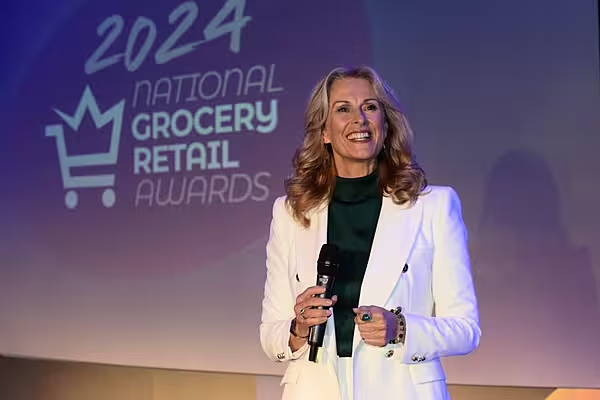Irish retailers need to adapt their business models or risk being overwhelmed by the demands of a mobile-empowered consumer base, a new report from PwC has found. Checkout reports.
The PwC Total Retail Survey results from around the world identifies 2016 as a watershed year for many of the trends that have been percolating over the last few years.
Consumers are pushing the boundaries of what shopping means, with big shifts in consumer expectations of mobile commerce becoming the norm. However, retailers have been slow to adapt to the changing demands of the mobile-empowered consumer. That’s the verdict of a comprehensive survey of 23,000 consumers in 25 countries by PwC, Total Retail, which found that sluggishness within the trade to cater for the expectations of the digitally enhanced consumer is as much a European issue as a local one, and retailers should look to Asia for clues as to the future of retail.
“If you look at China, you can see three times more usage in terms of mobile and a much greater pattern in terms of purchasing via mobile devices,” explains John Dillon, Ireland Retail & Consumer Partner, PwC, “but this is as much to do with lack of investment in fixed-line technologies. That has enabled the country to leap to mobile first, overtaking traditional markets, and led to the development of a whole new shopping culture, built around the smartphone.”
Chinese consumers, for example, are much more likely than those in the rest of the world to shop online via a mobile device. Some 65% say that they shop online via their mobile at least monthly, compared to just 28% of global consumers. In addition, almost one in five Chinese consumers says that s/he shops online every day, compared to fewer than one in ten for global consumers.
“If you look at how mobile has grown in China, it has been much faster than in any other market,” says Dillon. “It’s going to take a lot longer for us in Europe to get to that level, but if we look at purchasing trends, mobile usage and online penetration, we are going to get there in time, as we know that Irish mobile-shopping adoption rates are growing. In turn, that means that retailers need to prepare for significant changes in how consumers shop.”
Retail Engagement
Traditional retailers, the study found, have been slow to position themselves as innovators in the online and mobile space. While online businesses such as Amazon or China’s Alibaba have blossomed, the traditional bricks-and-mortar-led structure employed by mainstream retailers has hampered digital development. Just 17% of global respondents said that they felt that their favourite retailer was a ‘leading innovator’ in terms of nine online benchmarks, while just one in ten felt that the same retailer was a social-media pioneer. Consumers are now demanding innovation – and in particular, technological innovation – as they insist on a seamless, integrated omnichannel experience that enables them to shop anywhere via their mobile phone, tablet, PC or wearable device, in addition to traditional bricks-and-mortar stores.
Looking at the grocery industry, Ireland, in turn, is even further behind the curve when it comes to this level of investment.
According to Nielsen State of the Nation 2016 research, 37% of UK consumers say that they visit grocery websites, compared to just 23% of Irish consumers.
Owen McFeely, Senior Manager, PwC Retail & Consumer Practice, commented, “Consumers are conducting research online, which, in turn, is potentially driving them into offline purchasing.”
This opens up opportunities to develop more symbiotic relationships between a retailer’s online presence and that of its physical store. While the recent Brexit vote by the UK electorate to leave the European Union may cast doubts on Ireland’s future ability to sustain recovery, retailers that have emerged out of the downturn need to think differently about how they position themselves for growth.
“The market has to reinflate,” says Dillon. “In many ways, the big multiples have been looking over their shoulders at the discounters over the past few years and working to adapt their offer, as the effects of the recession hit revenues. Years of recession has changed shopping habits and has created a consumer who is happy to shop around a lot more in search of value, but as the economy begins to lift, and as we get closer back to full employment, time is going to be a factor that people have less of, and they won't have the flexibility to shop around like they had before. Retailers that engage with their customers on the terms that they want will be the ones to succeed.”
Overcoming Hurdles
Of course, the demographics of the Irish population have also been a contributing factor to the slower development of Irish retailers online and mobile-platform development.
While cities such as London or New York are seeing the rise of services such as Amazon Fresh, which provide short delivery lead times, such a service is difficult to provide outside of large, densely populated urbanised areas. Although Ireland’s road infrastructure has improved in recent years, critical mass is essential to make the economics of online retailing profitable. “One of the biggest challenges with online retailing is the area of logistics, and how you manage the additional cost of delivery within your supply chain,” says McFeely.
“You don’t have the same level of mass urbanisation that exists in other markets, and the same concentration in terms of population. Whilst it exists within the greater Dublin area, outside of that, the cost of delivery and transportation in less populated areas may just not be profitable when the cost of processing and delivering the order is taken into account, especially with the case of smaller basket sizes. This is a key challenge facing retailers, and one that is critical to address, to ensure long-term, profitable growth. ”
What We Want
What retailers should be doing, the study argues, is taking their lead from how consumers are engaging with mobile and online channels, and tailoring their offering according to this new set of demands.
It outlines a need for greater investment to be put into the in-store experience, the upskilling of employees, and the creation of better in-store environments to reflect the needs of the tech-savvy customer. While increased purchasing will be conducted online, shoppers will still shop in bricks-and-mortar retailers in high numbers, and demand that they create experiences, with staff that have a deep knowledge of a particular product range (cited by 40% of respondents), as well as better aftersales service (31%) and personalised service (28%).
Interestingly, the study also found that much of the hard work on customer engagement has already been done. Some 91% of respondents say that they are part of a retailer loyalty programme. However, in order to make a real difference, retailers will need to think beyond points and money-off vouchers to initiatives that really add value to a customer’s experience.
“With a lot of loyalty programmes, retailers don’t appreciate just how much actionable data they are sitting on,” says Dillon. “They have been capturing that data for years, but haven’t made the investment in terms of drilling down and discovering what the individual consumer wants. In many ways, loyalty programmes have grown stagnant through a failure of imagination, and don’t really build a community, which is a key opportunity for Irish retailers.
“One of the strongest themes from the study is around the area of all-round personalisation, providing me, as an individual, with things that matter. This might involve exclusive in-store events, promotions tailored exclusively to my needs, or product launches – aspects that are more akin to membership to exclusive clubs, rather than a fob on my keyring.”
Personal Touch
In this country, McFeely adds, this ability to make customers feel special isn’t anything new with certain Irish retailers, who may be at the forefront of loyalty-card development before it became an industry norm. With Ireland now emerging from years of austerity, which saw consumers becoming much more value focused, as well as the increase in mobile adoption rates, both factors will start to drive a change in consumer behaviour. The mobile-empowered consumer, who is also likely to become more time poor as the economy grows, is going to demand an extra effort from traditional bricks-and-mortar retailers, meaning that it is time to re-engage with this more traditional approach.
“Some stores do this brilliantly. For example, before a customer visits the store, they can research online and will be able to place their order online for home delivery or collection from a designated store pickup point. For consumers, the physical store remains an important element of both researching and purchasing.
“In fact, while shoppers increasingly prefer to research online, many still like to go to a store to make their purchase. In addition to an efficient ordering and collection service, a well-trained, customer-focused team creates an overall positive in-store experience, which can drive sales far beyond the original item the consumer sought to purchase.
“They come out of the store feeling that they’ve got a great deal – their wallet is a little lighter, with the retailer growing sales on the back of the well-executed customer experience.
“While online is certainly part of it, it really all comes back to well-motivated, well-trained and knowledgeable staff.”
The PwC Total Retail study encompassed an online global survey of 23,000 online shoppers from 25 countries on five continents in August and September of 2015. For further information, or to order a copy of the report, visit www.pwc.ie.









